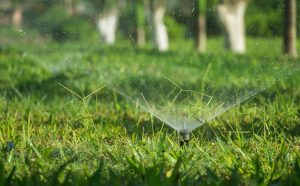Landscaping with Native Plants: Why Going Local Pays Off in Montana
If you’ve ever admired a wild Montana meadow bursting with color or noticed how effortlessly native grasses survive our dry summers, you’ve already seen the beauty and resilience of local plants in action. At Horizon Landscape & Irrigation, we encourage Billings-area homeowners to embrace native landscaping—not just for aesthetics, but for water conservation, wildlife benefits, and long-term sustainability.
Here’s why planting local is one of the smartest landscaping choices you can make in Montana.
What Are Native Plants?
Native plants are species that have grown naturally in a specific region for centuries—long before lawns, gardens, or commercial agriculture arrived. In Montana, these include wildflowers like blanketflower (Gaillardia) and prairie coneflower, grasses such as bluebunch wheatgrass, and shrubs like snowberry or serviceberry.
Because these plants evolved in our exact climate, soil, and weather conditions, they’re built to thrive with less help from irrigation, fertilizers, and pest control.
The Benefits of Going Native
1. Less Water, Lower Bills
Montana’s dry summers and unpredictable rainfall make irrigation a major concern. Native plants are already adapted to local drought conditions, so once established, they require significantly less water than turf grass or non-native ornamentals.
This means you’ll spend less time and money on watering—and your yard stays greener, even in July.
2. Support for Pollinators and Wildlife
Native plants provide food and habitat for bees, butterflies, birds, and other beneficial wildlife. While imported flowers may look pretty, they often lack the nutrients or pollen structure local insects rely on.
A native garden supports the entire ecosystem, from soil microbes to songbirds. If you’re interested in creating a pollinator-friendly yard, native plants are essential.
3. Low Maintenance Landscaping
Because they’re adapted to Montana’s environment, native plants are more resistant to local pests and diseases. That means fewer pesticides, less pruning, and fewer replacements.
Native grasses, in particular, are a great option for slopes and large areas where low maintenance and erosion control are key.
4. Natural Beauty That Fits Montana
Native landscaping reflects the true character of the region. These plants don’t just survive—they look right in our surroundings. A meadow of Indian blanketflower or a border of wild rose can blend seamlessly with your home and the surrounding terrain, creating a sense of place and harmony.
Common Native Plants for Billings Yards
If you’re not sure where to start, consider these hardy and attractive native choices:
Gaillardia (Blanketflower) – Bright orange-red blooms that thrive in dry soil
Blue Grama Grass – A compact, drought-tolerant grass perfect for borders
Rocky Mountain Penstemon – Purple flowers that attract pollinators
Prairie Coneflower – Tall and vibrant, excellent for wildflower beds
Serviceberry – A flowering shrub with berries that birds love
We can help you mix and match native species based on sun exposure, soil type, and aesthetic preferences.
What About Lawn Alternatives?
Traditional grass lawns can be replaced or complemented with native groundcovers like buffalograss or yarrow. These alternatives are more drought-resistant, require less mowing, and blend beautifully with natural features like boulders or xeriscaping.
Native Plants + Smart Landscaping = Long-Term Success
At Horizon Landscape & Irrigation, we believe that landscaping should reflect where you live—not fight against it. Incorporating native plants into your yard design is one of the most sustainable and rewarding decisions you can make as a homeowner in Billings.
From custom plant selection to irrigation planning that complements native species, we’re here to help you create a low-maintenance, high-impact yard that works with Montana’s climate—not against it.
Visit https://horizonlandscapemt.com to schedule a consultation or learn more about building a native landscape that’s as smart as it is stunning.
Read Next: Landscaping Mistakes We See All the Time (and How to Avoid Them)




